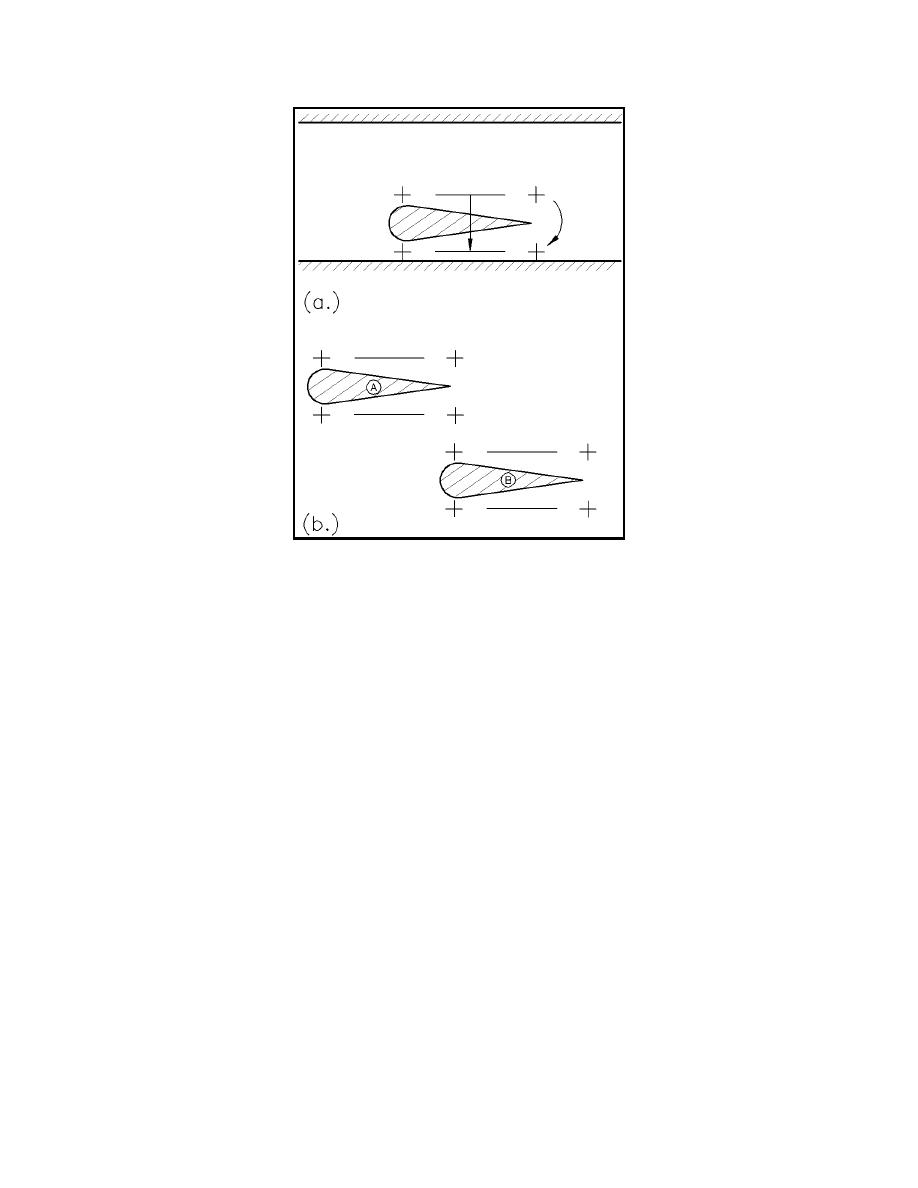
EM 1110-2-1100 (Part II)
30 Apr 02
Figure II-7-44. Pressure fields for moving vessels
(vessels moving left to right)
(b) Figure II-7-44a shows a vessel sailing close to a channel bank. Owing to the "Bernoulli effect,"
larger positive and negative pressures occur on the side closest to the channel bank, with the negative pressure
dominating to draw the vessel toward the bank and the larger bow pressure than stern pressure causing the
bow to rotate (yaw) away from the bank. Lateral force and yawing moment increase as the vessel sails closer
to the bank and they are approximately a function of the vessel speed squared. Manipulation of the ship's
rudder can correct for these forces, but it is difficult to travel close to a channel bank for any long period of
time (Kray 1970).
(c) Figure II-7-44b shows two similar vessels, with vessel A passing vessel B in unrestricted water. For
the positions shown, the bow of vessel A and the stern of vessel B would deflect outward because of the
positive pressures at both bow and stern. When the ships are even, they would be drawn together because
of the negative pressures midships, and their bows would be deflected slightly apart because of the positive
pressures at the bows. And as vessel A completes passing vessel B, the stern of B and the bow of A would
be deflected outward. Thus, the interacting forces and moments are complex, continually changing while the
ships are in the proximity of each other, and dependent on hull sizes and geometries; vessel speeds, directions,
and lateral separation; and water depth. Vessel interaction effects are more significant for vessels that have
a large cross-section area relative to the channel cross-section area and for higher vessel speeds.
(d) The effects of vessel interaction have been studied for specific conditions by carrying out model
studies (e.g. Taylor 1909, Robb 1949, Garthune et al. 1948, Delft Hydraulics Laboratory 1965, Moody 1970,
Dand 1976). Some analytical studies that allow calculation of the resulting forces and moments, but not the
vessel response, were conducted by Silverstein (1958), Hooft (1973), Tuck and Newman (1974), and Dand
(1976).
Harbor Hydrodynamics
II-7-63


 Previous Page
Previous Page
